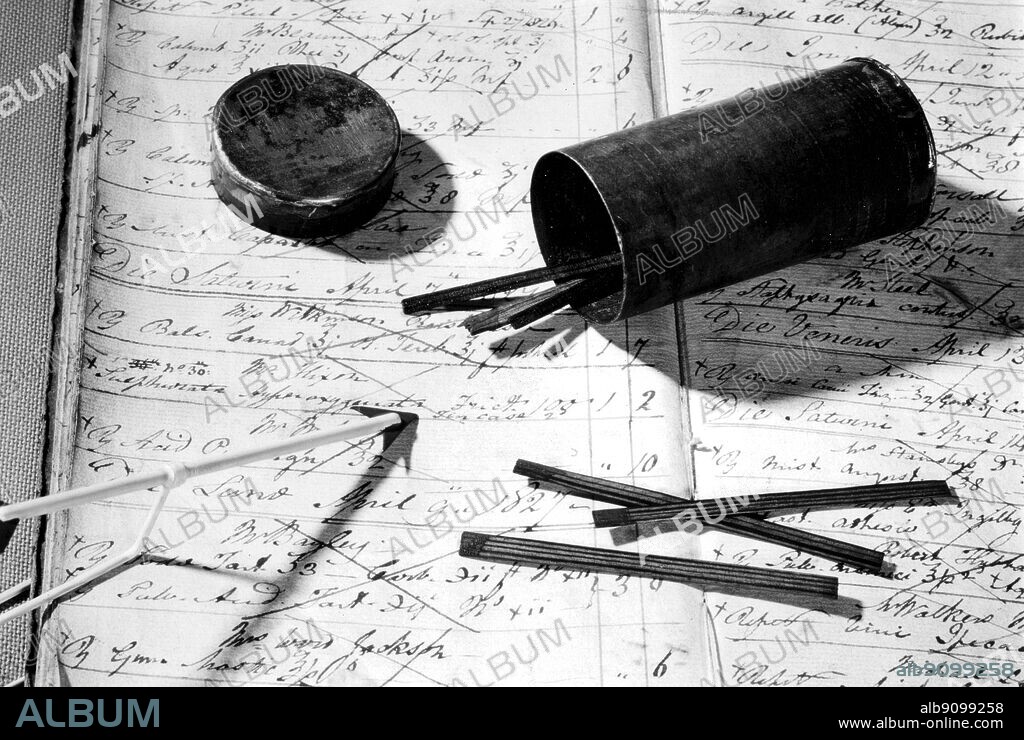alb9099258
Walker's Friction Match. John Walker, a chemist from Stockton-on-Tees, invented his "Friction Lights" in 1826, but although his friends urged him to do so, he refused to patent them on grounds that the idea was not sufficiently important. They were sold in round tin containers for 1/2d. per hundred. The earliest lights had cardboard stems, but he quickly improved them by using slivers instead. They were ignited by placing the head of the light between a folded piece of sandpaper, then sharply withdrawing it. As Walker had not patented his friction lights it meant that anyone could make them, and that is what soon happened..

|
Zu einem anderen Lightbox hinzufügen |
|
Zu einem anderen Lightbox hinzufügen |



Haben Sie bereits ein Konto? Anmelden
Sie haben kein Konto? Registrieren
Dieses Bild kaufen

Untertitel:
Siehe automatische Übersetzung
Walker's Friction Match. John Walker, a chemist from Stockton-on-Tees, invented his "Friction Lights" in 1826, but although his friends urged him to do so, he refused to patent them on grounds that the idea was not sufficiently important. They were sold in round tin containers for 1/2d. per hundred. The earliest lights had cardboard stems, but he quickly improved them by using slivers instead. They were ignited by placing the head of the light between a folded piece of sandpaper, then sharply withdrawing it. As Walker had not patented his friction lights it meant that anyone could make them, and that is what soon happened..
Bildnachweis:
Album / TopFoto
Freigaben (Releases):
Model: Nein - Eigentum: Nein
Rechtefragen?
Rechtefragen?
Bildgröße:
5704 x 3829 px | 62.5 MB
Druckgröße:
48.3 x 32.4 cm | 19.0 x 12.8 in (300 dpi)
 Pinterest
Pinterest Twitter
Twitter Facebook
Facebook Link kopieren
Link kopieren Email
Email
